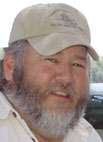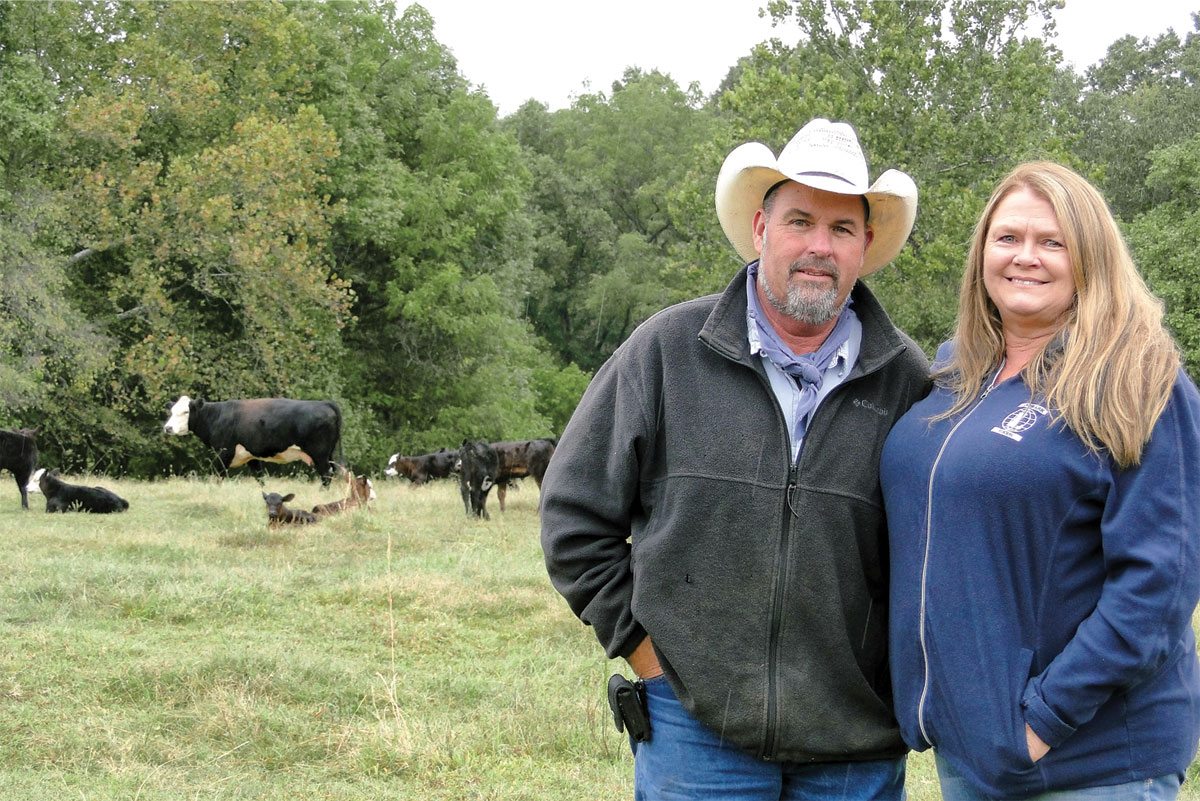
Larry and Kathleen Holt, who own K and L Farms in Mount George, Ark., have two successful farming operations that they have decided, complement each other perfectly. On the Holt’s 1,000-acre farm south of Russellville, Ark., they have both a Beefmaster operation and a poultry operation.
“They really go hand-in-hand,” Larry said. “In fact, the cost of fertilizer is what really got us in the poultry business.”
Neither Larry nor Kathleen are strangers to poultry. The lifelong farmers both grew up in the poultry business and in the early days, the entire operation involved manual labor, and lots of it.
“When (Larry) said we were going into the poultry business, I said 'Are you crazy?'" Kathleen recalled. But their operation, which includes 10 separate 43-feet by 500-feet buildings, is all monitored by computers, including the climate control system for the chickens.
The Holts receive day-old chicks, which are raised until they are eight and one-half to nine weeks old. Then they are shipped out for processing. On an annual basis, the Holts produce 8 million pounds of poultry.
Personally, Kathleen prefers working with the chickens. “Because I always know where they are at. They’re not out running around on a thousand acres somewhere,” she said.
That poultry operation complements the beef operation by providing needed fertilizer, Larry said.
“We produce 2,400 tons of poultry litter a year,” he said. “We’ve been able to cut out all excessive fertilizer purchases and only lime is purchased now.”
That fertilizer is critical because in recent years, the Holts have drastically changed their grazing program,
Larry explained, “We now use a rotational grazing program and try for 300 days of grazing a year,” which limits the amount of hay that is needed. This past year, the Holts even surpassed that goal. “The past year we only fed 50 days of hay,” he added.
“It’s more cost efficient to let them graze than to produce hay, and it has really cut down our fuel costs,” Larry said.
The rotational grazing system the Holts use includes cross-fencing the farm into 30-acre fields. The cattle are then rotated from one pasture to the other. Larry said typically the cattle stop grazing when the grass is about eight to 10 inches high. At that point, one of the Holts’ neighbors will cut the hay and give the Holts one-fourth of what is cut.
“We then have some hay to sell and for us to use,” Larry said.
The cost savings as a result of the changes have been significant, he said. The fuel cost has gone down from about $15,000 to $2,500 annually, Larry said. Plus, maintenance and labor costs have also dropped sharply, he said.
The Holts have downsized their cattle operation some in recent years. K and L Farms now has 100 head of registered Beefmaster. When the cattle operation began in 1985, the Holts had some Beefmaster bulls and were running commercial cattle, as well. In 1997, they decided to make the switch to a registered herd “so we could start to raise our own replacement bulls,” Larry said.
For Larry, it was the disposition of the breed that sold him on Beefmaster.
“I was in the construction business at the time and my wife and son had to look after them. So the disposition was very important to me,” he said.
Eight years ago he left the construction business, where he had built “poultry plants from here to the East Coast.”
In recent years the Holts have had 100 registered Beefmaster while also maintaining a herd of about 300 commercial cattle. But after the downsizing, they have maintained only the registered cattle the last two years.
“We plan to gradually increase, but we’ll stick with the registered,” Larry said.
Larry is a strong advocate for the Beefmaster breed, and is
active in numerous Beefmaster grower organizations at the state, regional and national level. He has also been president of the Yell County Cattlemen’s Association.
Being involved in organizations like that allow producers to market their cattle more effectively and share information about what other producers are doing to be successful.
The Holt’s two children – Phillip, 28, and Cassidy, 14 – are actively involved in the farming operation. Phillip has four chicken houses on his property while Cassidy is a regular winner showing family animals at the county fair.
For Larry and Kathleen, choosing to stay in farming and raise their children in that lifestyle was an easy choice.
“It’s a lot more pleasurable working for yourself and having the whole family is involved,” Larry said.







